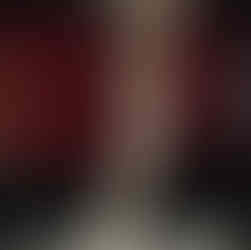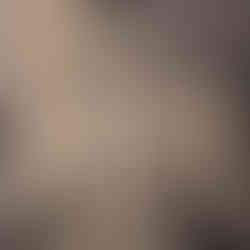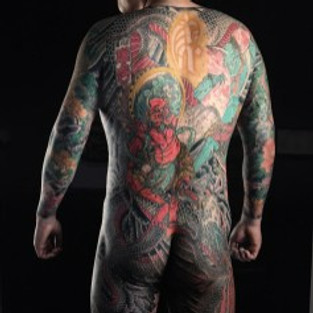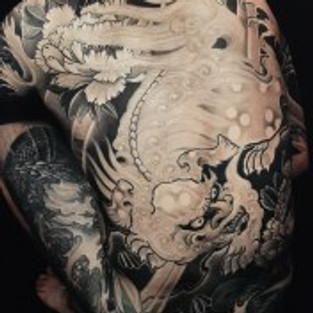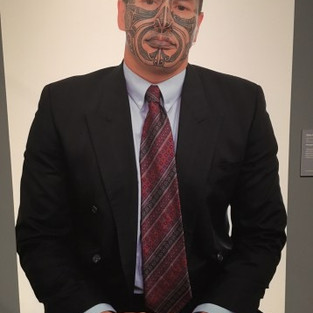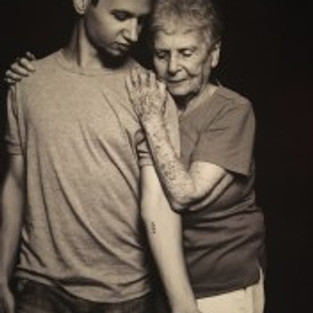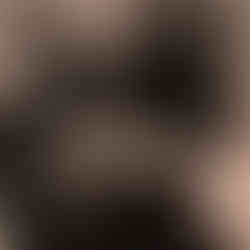The Magic and Power of Tattoos at The Natural History Museum
- artandcakela
- Feb 26, 2018
- 6 min read

Tattoo: An Exhibition, The Natural History Museum; Photo Credit: Nancy Kay Turner
The Magic and Power of Tattoos
through April 15 Natural History Museum, Los Angeles
By Nancy Kay Turner “Tattoo: An Exhibition,” on now at The Natural History Museum through April 15th, is a fascinating historical overview of the history, social and religious significance of “ink” worldwide, with an emphasis on our rich homegrown tattoo scene. Tattoos, according to the lucid exhibition wall text, are “a process [whose] results can be a sign of identity, a rite of passage, a type of protection, a form of medicine, a memory made visible, or a piece of art to be collected and worn on the most intimate of canvases, the human skin.”
The first room one enters showcases the techniques of contemporary tattoo artists like Guy Aitchison (a former illustrator) who is shown in a video working in a pristine well-lit home studio. Aitchison uses protective gloves and mechanical equipment while working from a design on his computer as he methodically inks an intricately colored, life-sized silicone male torso backside, which is on display here. He eloquently talks about his work, his techniques and its historical antecedents. The installation in this first room includes several dramatically lit glass cases, each containing only one mysteriously disembodied silicone tattooed shoulder arm and hand by well-known artists such as Chuy Quintanar, Leo Zalueta, Kari Barba and Aitchison. Each of these sculptural silicone arm fragments is a unique contemporary work inspired by tribal tattooing imagery such as bird feathers.
In the next room, the exhibition section entitled “Skin and Ink” shifts away from the contemporary and highlights artists like the legendary Apo Whang-Od Oggay from the Kalinga people of the Phillipines. She is an ancient though spry woman, now 100 years old, who lives in one room and inks with a simple homemade bamboo/cactus spine. In a video, she is shown tattooing a tourist who has come to her village because she is a famous. I must admit he looks like he’s about to faint most of the time as he tolerates the extremely painful process. For him, it’s probably all about style and aesthetics. But the women in this village believe that being tattooed by Apo Whang-Od Oggat will increase their fertility. Tattoo for them is a magic incantation and a blessing, not merely decoration. This section is one of my favorites and is quite moving.
Tattooing is woven into the religious activities of numerous Asian and Southeast Asian cultures highlighted in this section. Many of these vintage monochromatic photographs are reminiscent of Richard Avedon’s striking black and white portraits. They show mostly males (with inscrutable expressions) looking directly into the camera, arms at their sides while exposing the elaborate and densely inked images on their chest, arms and stomach.
Information on the formation of inks is also included, along with carved blocks made of ash. In Burma in the 20th century, ashes from cremated monks and ashes from the remains of burned religious documents were used in the formulation of the ink. Then this was mixed with India ink paste or even bile from the liver of an animal or an enemy to give it more power. One is struck by the spiritual implications of this mixture. In Borneo, it’s the women who do the tattooing, while the men are responsible for making the ink blocks. According to the text “after dipping the block in black pigment and tamping it against the body, a wood or iron mallet would be used to drive the needle(s) into the skin.” Each of these blocks represented carved images meant to ward off evil spirits. In this case, beauty is more than just skin deep.

Tattoo: An Exhibition, The Natural History Museum; Photo Credit: Nancy Kay Turner
When I was growing up in The Bronx in the fifties, tattoos were only seen (if at all) on sailors, felons and Holocaust survivors. The exhibition next addresses these three groups as it discusses the role of tattooing in criminal affinity groups like the Japanese mafia (Yakuzas in The Bath is a striking photograph of this group) and Russian survivors of The Gulag. Tattoos were used to brand criminals in the 19th century and, in Russian prisons, the tattoos identified the crimes that the perpetrator had committed. For example, according to the wall text “a skull and crossbones meant murder, a cat was for a thief, and a prostitute got a tattoo of a penis. Prison staff were represented by pigs and wolves, while justice was a sow.”
Branding is used to humiliate or cause pain and here the forced tattooing of Jewish prisoners in Auschwitz is demonstrated with two images. One is of a young twelve year-old boy survivor who shows his tattooed number on his forearm.. The other very moving image is of Israeli Daniel Philosoph and his grandmother Livia Ravek, who was forcibly tattooed with the number 4559. Her grandson Daniel has voluntarily tattooed her number on his arm as a way to remember the horrific events of the camps and to honor his grandmother (apparently he is not alone in doing this).
The exhibition continues with the tattooing customs and beliefs of both the Inuit Indians, whose women wear chin stripes to announce that they are ready to marry and Mojave Indians, who believe that facial tattoos assure that they will go to The Land of The Dead after death. Facial tattoos are crucial to the Maori tribe of New Zealand and one of the most striking images is an extremely large and somewhat confrontational color photograph of Dion Hutana, in a suit and tie sitting quite formally with hands folded politely on his lap. His completely black lined tattooed face is an unexpected contrast with the formality of both the pose and the Western business attire for us in the west. Dion says: “Taking ta moko (Maori tattoo) has been and is part of my well being.”
Large color photographs of the work of the Chinese/Taiwanese tattoo artists Dong Dong and Gao Bin are among the most stunning images in the entire exhibit. One striking image is of the torso, back, buttocks and thighs of a young male. From the waist to the shoulders is a monochromatic realistic rendition of a Buddha replicated twice, while from the waist down is an intricate full color elegant drawing and design with both figurative and abstract elements. There are three other large-scale color photographs of work by both artists that showcase their incredible draftsmanship as they integrate more traditional Chinese imagery of Buddhas, dragons and lions.

Tattoo: An Exhibition, The Natural History Museum; Photo Credit: Nancy Kay Turner
Next up is a very large section on America’s contribution to tattooing, complete with a tattoo parlor (which were not in the original show that came from Musée du quai Branly – Jacques Chirac in Paris) which it turns out is totally functional. Museum-goers can book an appointment and get a tattoo! The focus in this part of the exhibition is on the port of Long Beach, which was frequented by sailors and also the influence of the East LA tattoo artists who initiated the black and gray style. Here there are also letters and drawings by the influential American tattoo artist and entrepreneur Ed Hardy, which were disappointing for me after seeing the exquisite work of the contemporary Chinese/Taiwanese tattoo artists. His work looked surprisingly derivative and clumsy.
The section entitled “LA’s Ink”, features the contribution of those East LA tattoo artists who were prisoners and honed their skills behind bars. They had unlimited humans to experiment on with their homemade and ingenious tattooing devices and ink. They created a monochromatic (hence black and gray style) that married religious iconography with Mexican symbols. Some of the most beautiful monochromatic images are in this part of the museum.
This exhibition is ethnographic, archaeological and aesthetic as it explores, elucidates and demonstrates the power of a tattoo to tell a story, to relate family history, to ward off evil and to decorate. It is a story as old as the 5,000 year-old Ice Man mummy, who was tattooed, to the youngest among us who feel the need to join in the newest ink revival. It is a show worth seeing – beautifully installed, filled with excellent wall text and poignant and beautiful tattooed people throughout history.
Natural History Museum of Los Angeles County 900 W Exposition Blvd, Los Angeles, CA nhm.org
#losangeles #california #losangelesartist #art #painting #GaoBin #Kalinga #nudes #losangelesart #contemporaryart #DionHutana #artistrunspace #DongDong #DanielPhilosoph #Phillipines #abstract #ChuyQuintanar #MuséeduquaiBranlyJacquesChirac #Indiaink #artgallery #EdHardy #gallery #tattooing #Tattoo #artandcake #artopening #artexhibition #longbeach #ArtandCakeLA #NancyKayTurner #RichardAvedon #fineart #artists #GuyAitchison #artist #arts #artreview #NaturalHistoryMuseum #LiviaRavek #artmagazine #artcollective #ArtandCulture #exhibition #LeoZalueta #ApoWhangOdOggay #exhibit #KariBarba



